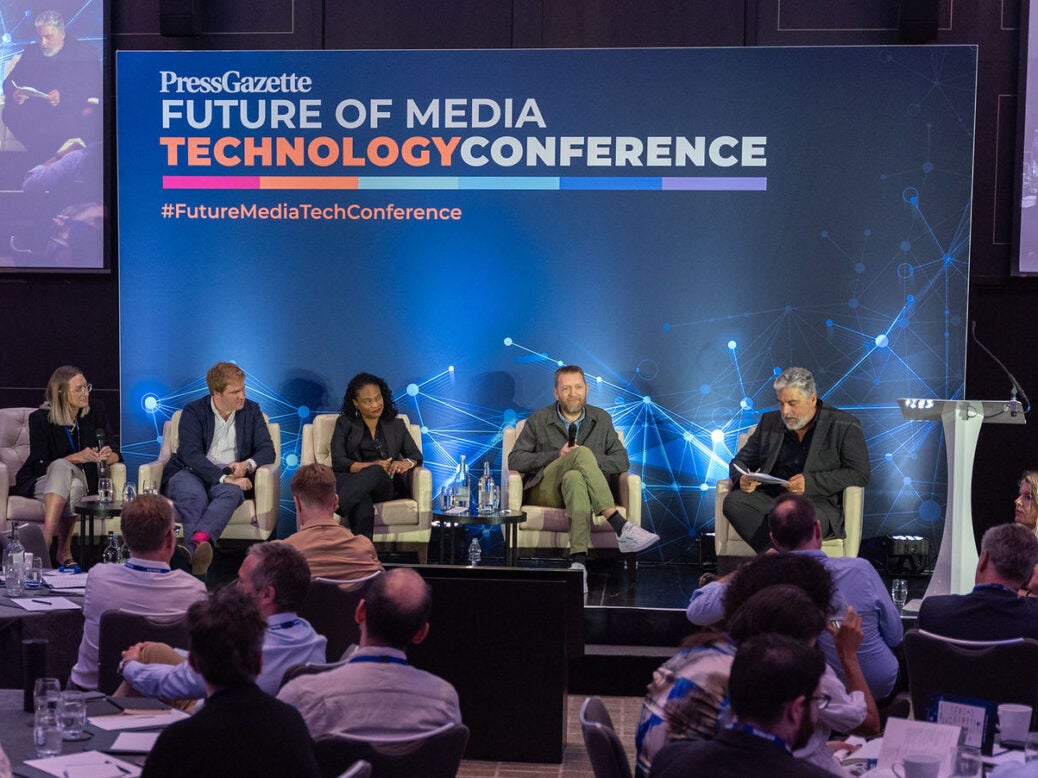
When publishers talk about Tiktok, they usually discuss questions like what types of content work, how big their video teams should be, and how it can help them reach the coveted Gen Z audience.
But it was pointed out at Press Gazette’s Future of Media Technology Conference held in London on Wednesday that publishers can also learn lessons from Tiktok’s user experience that keeps people there for, on average, 95 minutes per day.
Miki Toliver King, president of CMS company Arc XP, told a panel on audience growth: “We can learn a lot from the social platforms.
“There’s a reason why my 17-year-old might spend 15, 20, 30 minutes at a time, much to my chagrin, on Tiktok, because there’s something about that experience that it’s taking him from one experience or one bit of information to another.
“How are we doing that on our sites as we’re thinking about recirculation and everything else related to the journey once someone reaches us? So I think that we’ve got to be constantly really intentional about what that is and understanding how we’re training our audiences as they’re coming to us.”
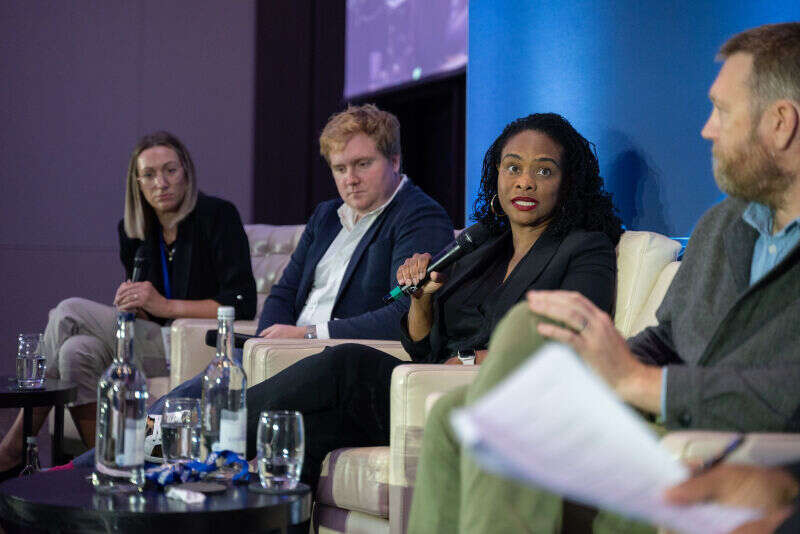
She added: “Recirculation models, suggestion models are really, really important here. We all know the brands that do this best, right? You go for one video, and here you are in the rabbit hole 25 minutes later.”
Engage with readers where they are
The Independent’s head of audience Matt Payton told the panel publishers can afford to stop constantly trying to refer people from their social media content to their own websites.
“I think sometimes the urge is to be like ‘we want them on our website’,” he said. “’Let’s bring them to the website all the time, all the time, all the time’. And people ignore you. You’ve got to engage them where they are.”
Payton said the pool of users on social media is “still huge” but “you just have to accept that you’re not going to collect all of them.
“But there are still huge numbers that we can bring revenue off and we can work with and we can engage and with a high level of engagement, there are people that we can bring off-site.
“Look at Instagram, for example. The journey off-site is rubbish. It’s really annoying. But you can get engaged audiences off it. You just have to do it right. And that’s the key thing.”
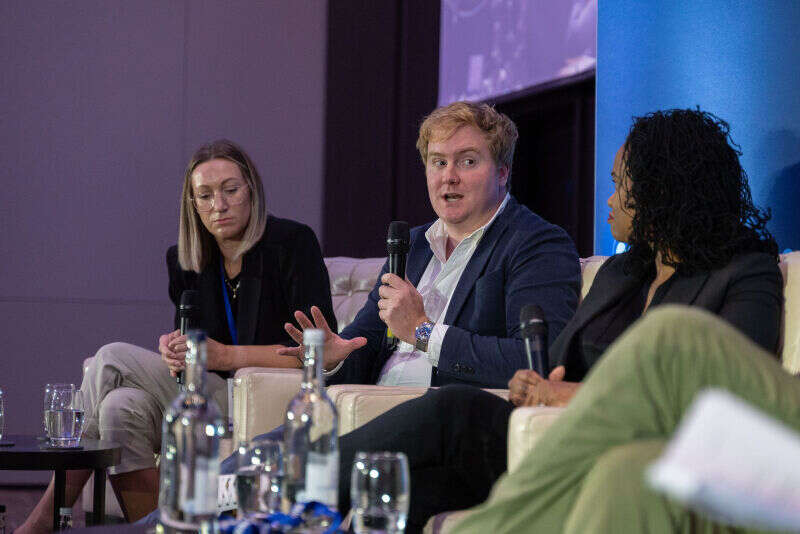
Ladbible still growing audience and revenue from Facebook
Ladbible Group is still seeing traffic referrals from social media grow – including at Facebook despite an industry-wide trend in the other direction, according to chief revenue officer Tim Pearson.
Pearson said we are still in a “golden age” for social media despite the fickle nature of the platforms and their relationships with publishers.
He said Ladbible Group has done research that found Gen Z are spending about four hours a day on social media “and that will only grow over time, and that’s obviously an important audience.
“But more than just the scale of it, there’s also the importance that social media is playing in the roles of the lives of young adults and beyond.”
Pearson said social media is “hugely important, and therefore will remain important” to publishers, saying of its significance to Ladbible Group: “We have to be where the audience is and communicate to the audience in a way that is native and authentic to them. It’s where we find new audiences and connect with new communities. It’s where we build brands, and it’s obviously very much where we monetise.”
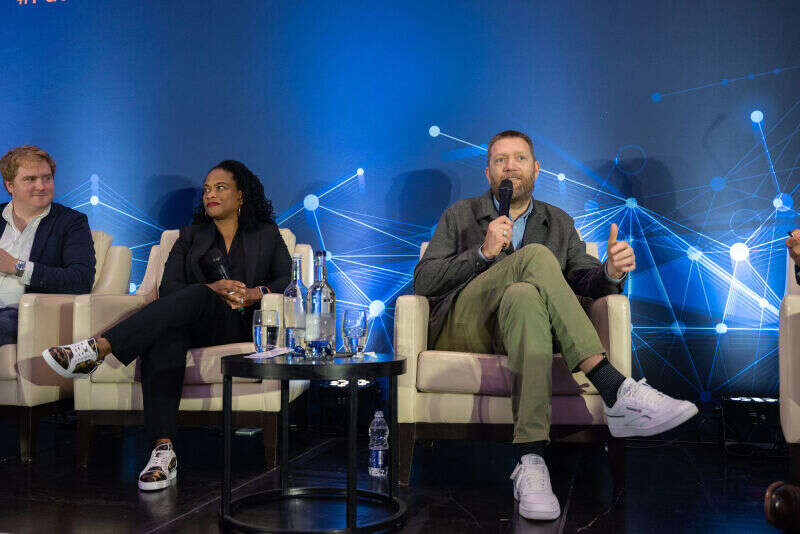
Ladbible Group’s social media revenue comes from an indirect revenue share from the platforms and direct through its own branded content.
“All of that’s in growth, and actually the traffic that’s coming from social into our websites is increasing as well,” Pearson said. “So we’re seeing traffic inflows up and we’re monetising as well, which is good for us to see.
“It presents some challenges though – the social media platforms move at real pace, so the expertise inside the business really needs to be the expertise that can move at the speed of the changes of the algorithms. And that, I think, does present challenges but also opportunity here.”
Young people still want news, but they want it to be different
One publisher trying to seize that opportunity is Reach, where social brand Curiously, targeting 16 to 34-year-olds, marks one year since its soft launch this month.
It is now in the early stages of creating a website: “That was really intentional because we wanted to make sure that we were connecting with audiences where they were,” Anna Jeys, Reach’s audience and content director for new audiences, said.
“We wanted to make sure that we were learning across that year about how the different platforms behave, but also what our different audiences wanted on those platforms and make sure that we were building the community and more importantly, I guess a brand that they wanted to come back to rather than worrying about them coming on to a site now.”
Jeys told the panel that news avoidance among young people is not because they do not want news, but because they want news differently to how it has traditionally been done.
She said the team working on Curiously are aged 19 to 35 and they and their audience “see news in a slightly different way”. Popular topics have proved to include health, fitness and wellbeing, celebrity and entertainment news, but in a more digestible format and often with a different tone.
Jeys said the Curiously project is “about how we can make sure that we are changing up what we’re delivering and how we’re delivering it, how we’re making sure that we’re keeping up with the changes around formats, how we make sure that we’re delivering content that is different for different platforms, and how we can make sure that we’re not just focusing on topics that we knew were working a year ago, two years ago, but that we’re moving with a sense of change of social conversation, and making sure that we’ve got that sort of diversified topic that we can go after”.
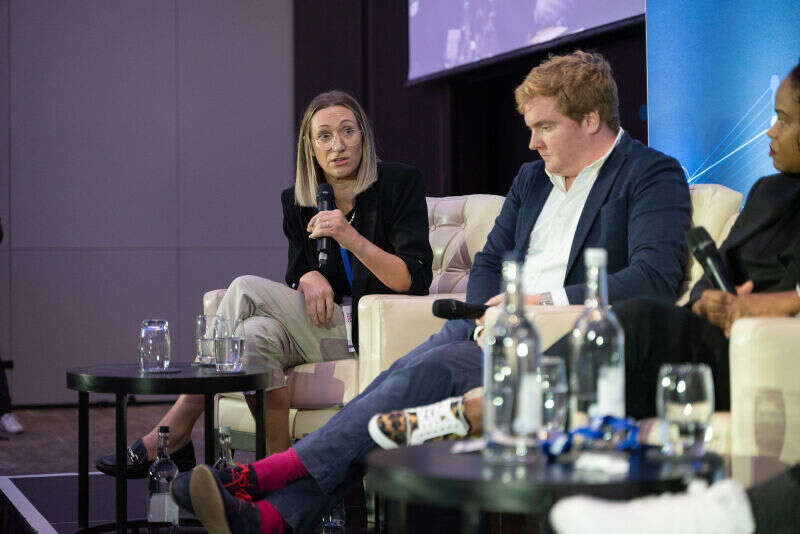
Email pged@pressgazette.co.uk to point out mistakes, provide story tips or send in a letter for publication on our "Letters Page" blog
